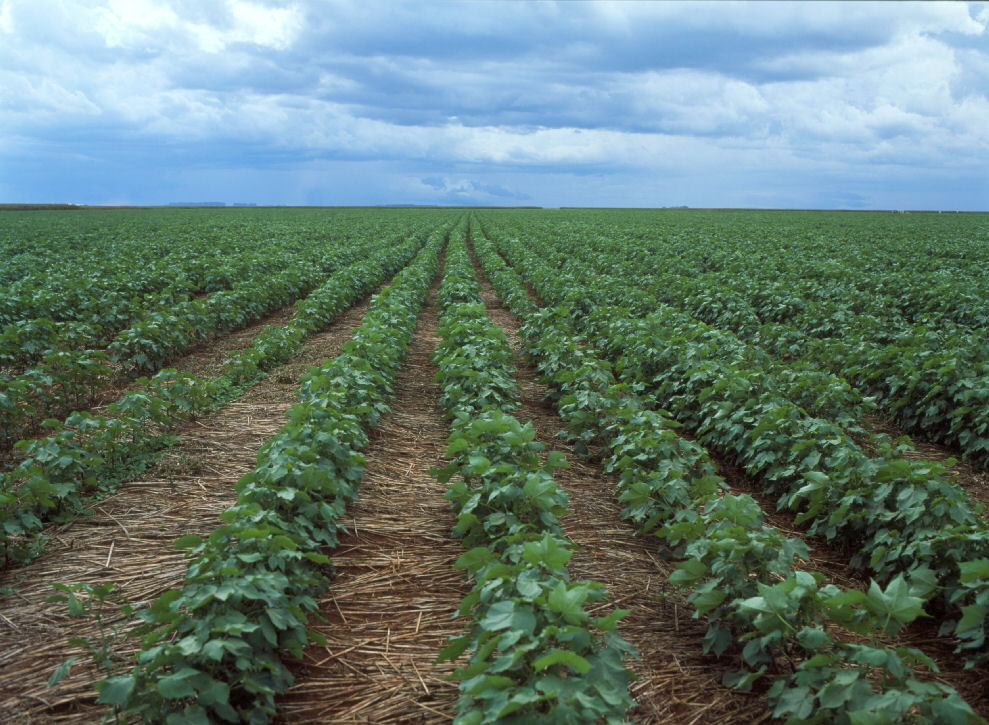 A clean start: weeds need to be controlled by a burndown herbicide
A paraquat burndown spray gives crops a clean start, free from competition from weeds that have survived the winter or emerged in spring before planting.
A clean start: weeds need to be controlled by a burndown herbicide
A paraquat burndown spray gives crops a clean start, free from competition from weeds that have survived the winter or emerged in spring before planting.
Weeds can be buried by ploughing to prepare a seedbed, but this runs the risk of damaging soil structure, leaving fields susceptible to soil erosion. Conservation tillage systems, with minimal or no soil cultivations (no-till), avoid these problems and help conserve moisture. Weeds need to be controlled by herbicides as pre-plant burndown applications.
Farmers have few burndown herbicides to choose from. The only broad-spectrum products are based on paraquat, glyphosate and glufosinate. Other burndown herbicides include saflufenacil, dicamba and 2,4-D. These are usually mixed with glyphosate. In many cases, the crops to be planted, such as corn, soybeans or cotton, will be genetically modified to be tolerant to glyphosate and glufosinate. Resistant weeds are a huge problem in many areas and a key resistance management strategy is to use herbicides with different modes of action. Paraquat is a good choice for burndown, leaving glyphosate or glufosinate to be used as selective herbicides later in the growing crop.
Choice of burndown herbicide
When choosing a spring burndown herbicide, farmers will be focusing on:
- Weeds present, especially any species resistant to glyphosate.
- Safety to the crop.
- Time constraints.
- The weather – temperatures may still be low and rain may threaten.
The basic profiles of key burndown herbicides are summarised in the table below, with following explanations.
| Weed control features | Paraquat | Glyphosate | Glufosinate | Saflufenacil | 2,4-D/ Dicamba |
|---|---|---|---|---|---|
| Annual Broadleaves | Yes | Yes | Yes | Yes | Yes |
| Annual Grasses | Yes | Yes | Some | No | No |
| Perennials | No | Yes | Weak | No | Some |
| Speed of action | Very fast | Slow | Fast | Fast | Slow |
| Plantback restrictions | No | No | Minimal | Yes | Some |
| Temperature dependant | No | Yes | Yes | Not strongly | Yes |
| Rainfastness* | 15 – 30 minutes | 4 hours | 4 hours | 1 hour | 4 – 24 hours |
*From labels of products containing these active ingredients available in the United States.
The herbicides in the table above all have different modes of action, which determine key aspects of their performance in the field.
Weed Control
Paraquat and glyphosate are very broad-spectrum herbicides, controlling almost all annual broadleaved weeds and grasses. Unlike paraquat, glyphosate is systemic and also controls perennial weeds. However, weed resistance to glyphosate is a serious problem and in glyphosate tolerant crops it is best reserved for selective use. Glufosinate also controls a broad spectrum of weeds, but only when they are less than 7.5 cm (3 inches) tall, and it is weaker on grasses and most perennials. Saflufenacil, 2,4-D and dicamba do not control grass weeds.
Crop restrictions
Burndown herbicides must have no soil residual activity or have crop selectivity if a crop is to be planted without restrictions as to species and the interval that must elapse between application and planting. Paraquat is deactivated immediately on contact with soil and any crop can be planted as soon as spraying has been completed.
Glyphosate has no soil activity. Glufosinate has plantback restrictions for some crops, as do the hormone herbicides. Saflufenacil has label recommendations as a pre-emergence herbicide at higher application rates. Care must be taken to read the label instructions because some crops may not be planted for nine months after saflufenacil application.
Weather
Paraquat is very fast acting because it disrupts photosynthesis and this causes damage to cell membranes. Moreover, paraquat is unique in that it performs especially well in lower light intensities, under cloudy skies or in the evening. This superior performance can also be obtained by mixing with photosynthesis inhibitors like metribuzin or diuron. These partners may also add some residual activity.
Low temperature is often an important factor in early spring. Unlike other burndown herbicide options, paraquat's activity is relatively unaffected by temperature. It will work extremely quickly in freezing temperatures on a sunny day. Glyphosate, however, may take several weeks to kill weeds under cool conditions.
If rain falls before sufficient herbicide has been absorbed into plants, active ingredients may be washed off leaves, resulting in poor weed control. Paraquat is renowned for its rainfastness, standing out from the competition. In spring, when showers may disrupt spraying operations, rainfastness is an important feature, completing paraquat’s all-round qualities as the herbicide of choice for burndown.

